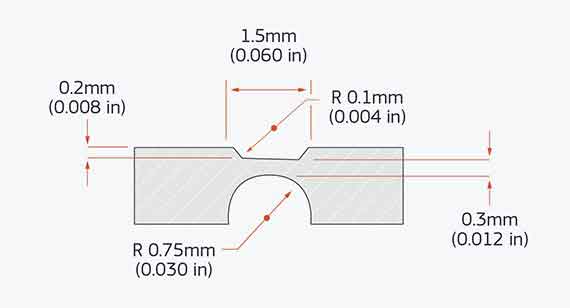Living Hinge Basics for Injection Molding

Designing plastic parts can be challenging enough, let alone designing a living hinge that can fold and flex repeatedly. Hinges are often found in plastic part design in order to reduce the number of components within an assembly or cut down manufacturing costs.
A living hinge is a thin piece of plastic surrounded by thicker plastic that allows a part to fold or bend from 1 to 180 degrees. But as the part bends, it creates strain called tensile stress. If plastic is too thin, it may not have the necessary strength and the part may tear. If it is too thick, it will create too much stress and the part will fracture.
There are a few ways to implement a living hinge in an injection molding design. In addition to a few design guidelines, material selection plays a critical role. Let’s review a few of the key features for optimizing your living hinge design.
Recommended Materials for Living Hinges
Polyethylene and polypropylene are ideal candidates for designs that include living hinges as they both have a high melt flow. This allows them to fill thick and thin wall sections, while providing high tensile strength. Although not recommended, K-Resin (SB) can be suitable for certain applications when a harder or clear material is required.
For harder materials like K-Resin, special precautions must be taken such as bending the hinge as it comes off the press warm. This reduces tensile stress and mitigates risk of failure such as cracking at the hinge.
How to Design a Living Hinge
When working with customers, our design guidelines for living hinges are 0.012 in. thickness with a spacing of about 0.060 in. and 0.008 in. reduction on the side the part is folding towards. On the opposite side where the majority of the tensile strain occurs, we recommend a radius of 0.030 in. to improve material flow and reduce strain. These recommended dimensions provide a good starting point, but can be adjusted depending on the application or part design.
Gate placement can also be the difference between a durable, long-lasting hinge and one that is susceptible to failure. Proper gate placement will reduce knit lines by ensuring that material flows through the hinge at the same rate and in the direction of material flow.
Have additional questions regarding hinge design for molded parts? Please contact our applications engineers at +86-755-27311095 or [email protected]. If you would like a hands-on example of this living hinge and other common injection-molded features, request a free Design Cube.